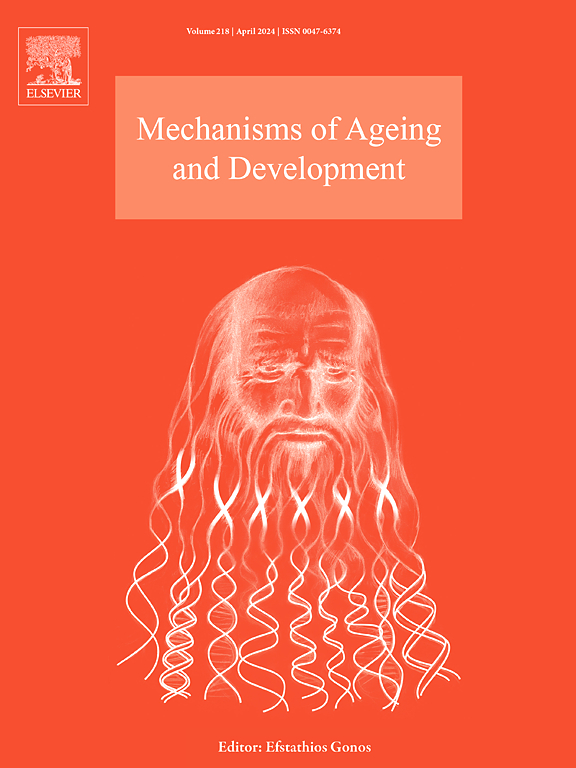老龄化、代谢组学和古人类学:这三个领域可以相互学习什么?
IF 5.1
3区 医学
Q2 CELL BIOLOGY
引用次数: 0
摘要
变老是数百种不同疾病的主要风险因素。因此,除非这种不良健康状况能够得到改善或扭转,否则全球人口老龄化将构成重大的社会、医疗和经济挑战。因此,越来越清楚的是,跨学科的方法来理解老龄化,虽然不是必要的,但允许合作团队开发新的方法,可以加速将研究转化为干预措施。新概念和新技术的共同创造也为相关的各个学科带来了互惠互利。人类衰老的进化就是一个很好的例子。虽然人们对形成衰老进化的过程和因素有广泛的共识,但它们对人类衰老进化的相对贡献仍然不太清楚。这是由于三个不同的因素。直到最后一个冰河时代结束之前,智人一直暴露在遗传瓶颈的扩展中,这使我们的物种与几乎所有当前的衰老模型截然不同。社会性,人类与许多(但不是全部)现存的灵长类动物共有;最后,一个延长的生殖后绝经期,这在生物圈中是极其罕见的,在人类中是独一无二的。因此,作者组织了一个关于早期人类进化的生理学和人口学的研讨会,古人类学家、考古学家、人口生物学家和老年科学家在会上讨论了人类老龄化问题。这产生了重要的跨学科研究重点,可以加速目前老年人治疗方法的发展,并改变我们过去对衰老过程的理解的关键方面。本文章由计算机程序翻译,如有差异,请以英文原文为准。
Ageing, metabolomics and palaeoanthropology: What can the fields learn from each other?
Growing old is the major risk factor for hundreds of distinct conditions. Thus, ageing of the global population will pose major social, medical, and economic challenges unless this ill health can be ameliorated or reversed. Accordingly, it is increasingly clear that cross-disciplinary approaches to understanding ageing, although not essential, allow collaborative teams to develop new methodologies which can accelerate translation of research into interventions. Co-creation of new concepts and technologies also brings reciprocal benefits to the individual disciplines involved. The evolution of human ageing is a case in point. Whilst there is broad consensus concerning the process and factors shaping the evolution of ageing in general their relative contributions to the evolution of human ageing remain less clear. This is due to three distinct factors. The extended genetic bottlenecks to which H. sapiens was exposed until the termination of the last ice age which sharply distinguishes our species from almost all current ageing models. Sociality, which humans share with many, but not all, living primate species; and finally, an extended post reproductive menopausal period which is extremely rare in the biosphere and uniquely long in humans. Accordingly, a symposium on the physiology and demography of early human evolution was organised by the authors at which palaeodemographers, archaeologists, population biologists and geroscientists discussed human ageing. This has generated important interdisciplinary research priorities which could accelerate the development of treatments for older people in the present and transform key aspects of our understanding of the ageing process in the past.
求助全文
通过发布文献求助,成功后即可免费获取论文全文。
去求助
来源期刊
CiteScore
11.10
自引率
1.90%
发文量
79
审稿时长
32 days
期刊介绍:
Mechanisms of Ageing and Development is a multidisciplinary journal aimed at revealing the molecular, biochemical and biological mechanisms that underlie the processes of aging and development in various species as well as of age-associated diseases. Emphasis is placed on investigations that delineate the contribution of macromolecular damage and cytotoxicity, genetic programs, epigenetics and genetic instability, mitochondrial function, alterations of metabolism and innovative anti-aging approaches. For all of the mentioned studies it is necessary to address the underlying mechanisms.
Mechanisms of Ageing and Development publishes original research, review and mini-review articles. The journal also publishes Special Issues that focus on emerging research areas. Special issues may include all types of articles following peered review. Proposals should be sent directly to the Editor-in-Chief.

 求助内容:
求助内容: 应助结果提醒方式:
应助结果提醒方式:


